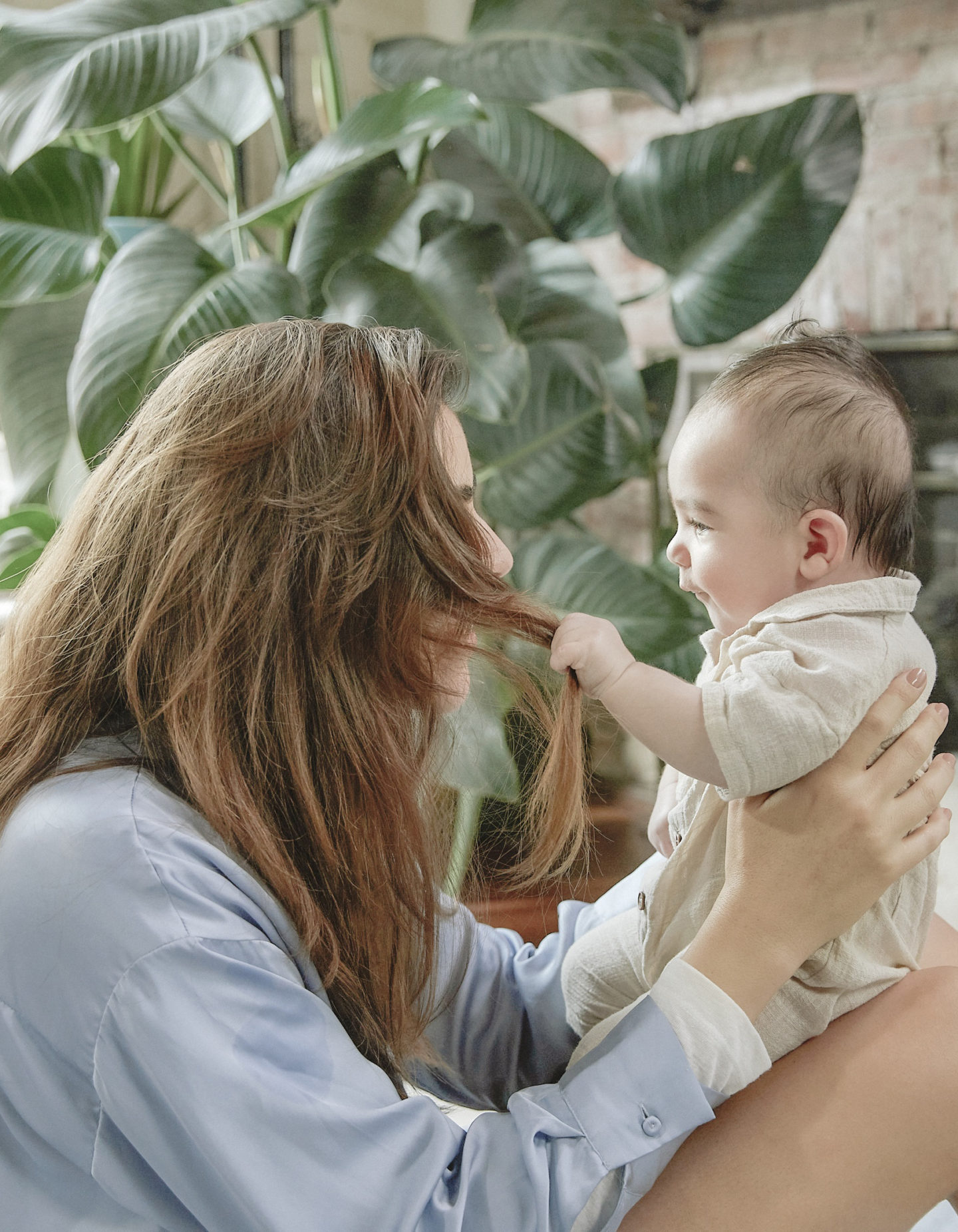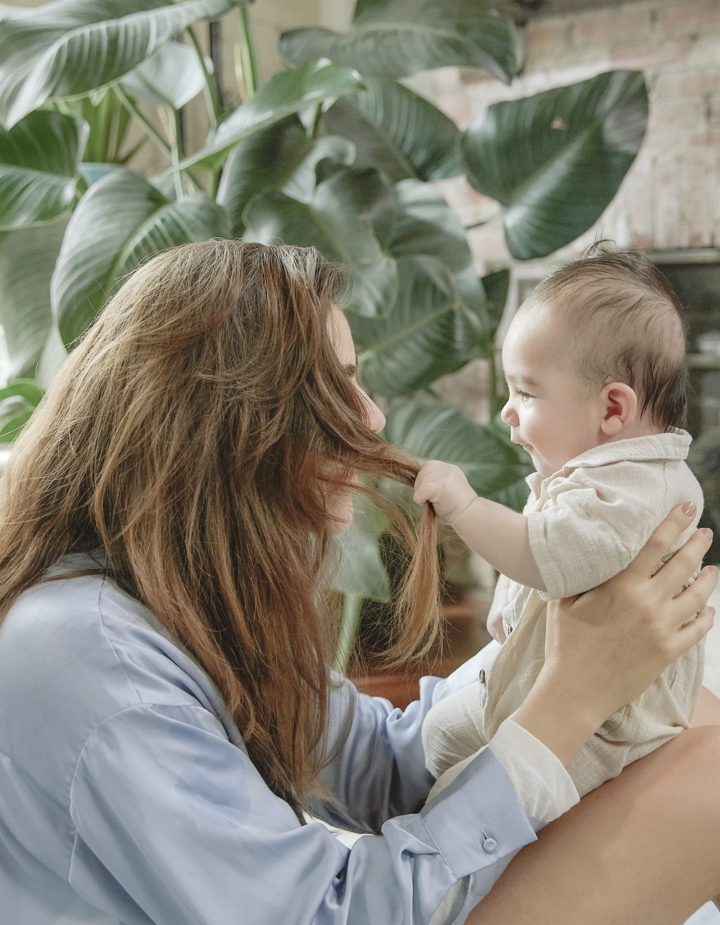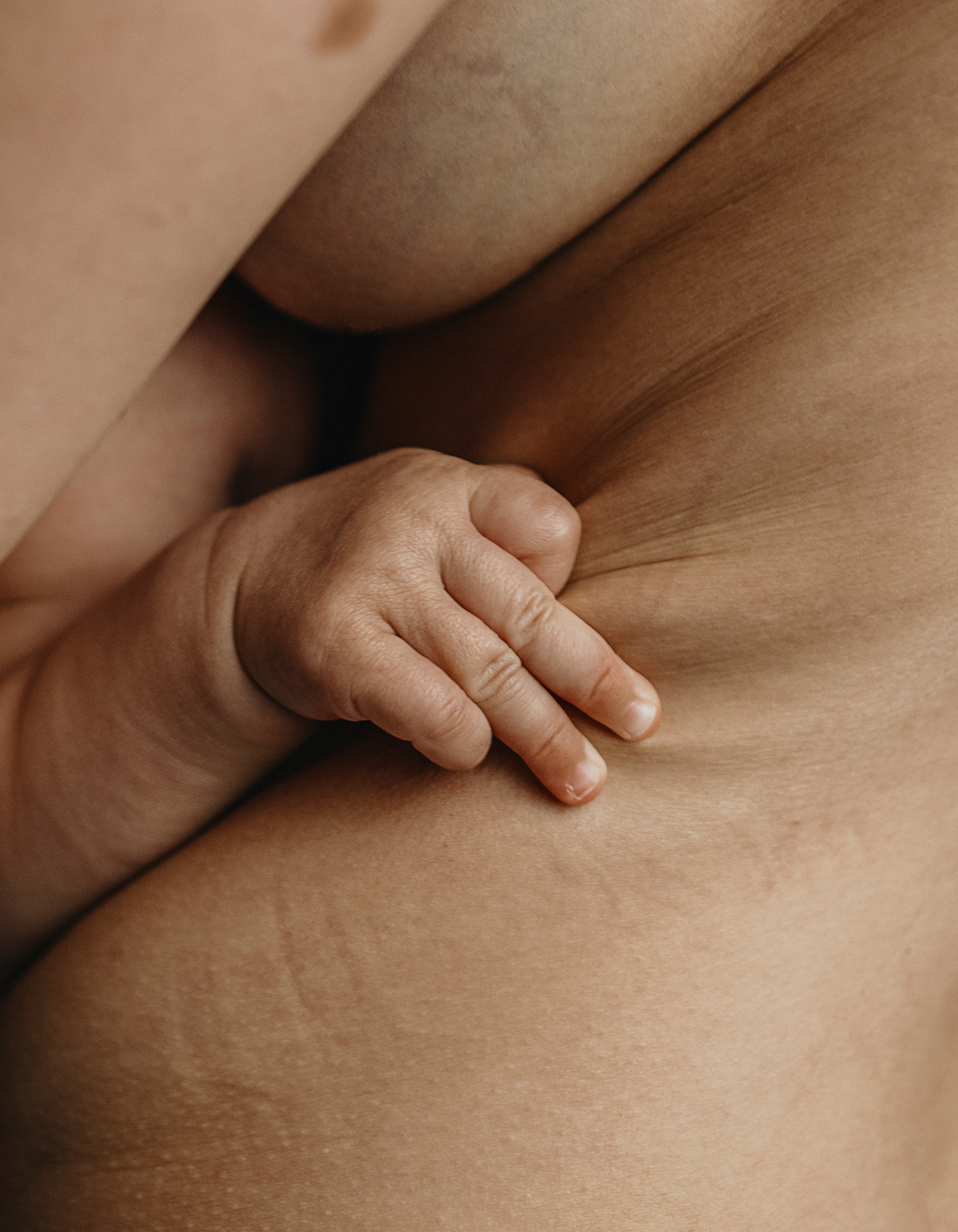This post contains affiliate links. Babe by HATCH may earn commission from any sales made or actions taken as a result from readers clicking the links on this page.
There’s no magic pill to make your previously pregnancy-induced voluptuous hair remain postpartum. Hair thinning is almost guaranteed to occur after giving birth, and it can be an emotional, uncomfortable, jarring experience. Thankfully, our friends at Nutrafol created a Postpartum iteration of their fan-favorite supplement so that your hair growth cycle can get back on track ASAP. Here, we chat with Dr. Sophia Kogan, MD, co-founder of Nutrafol, about what you should know about your postpartum hair journey.
1. You’re going through a hormonal shift.
“Hormonal shifts are absolutely normal,” Dr. Sophia Kogan tells us. “This is how our body knows how to support the baby through pregnancy, how to give birth, and how to become superhuman after.”
“During pregnancy, we have elevated levels of estrogen and progesterone that support the pregnancy and actually tell hair to stay in the growth phase for longer. This is why some women have luxurious hair during pregnancy,” Dr. Kogan explains. “After giving birth, however, these same hormones drop very suddenly, while cortisol increases by almost 200%. This creates a shift in the growth cycle and the hairs that were patiently waiting to shed, move into the telogen or resting phase of the cycle that normally lasts about 3 months. After approximately 3 months, that hair is released, which is why most women experience increased postpartum shedding generally 3-4 months after childbirth.”
2. This, too, shall pass.
Despite how alarming it may seem, there is an end to this process. “Every woman’s timeline is different,” Dr. Kogan tells us. “Generally, postpartum shedding happens about 3-4 months after childbirth, but based on certain other root causes in the body this process can sometimes last over one year in women.”
One thing that can help: starting to take supplements as soon as possible. “We created Nutrafol Postpartum so that you can begin to take it as soon as the baby is born,” Dr. Kogan explains. “The formulation is designed to be taken during the year after childbirth, and for as long as they plan on breastfeeding.”
3. Don’t be surprised that you’re “emo”.
For some women, hair is directly tied to femininity. Don’t be surprised if you are having strong, emotional reactions to hair thinning. Be sensitive with yourself during this time. Stress won’t help matters.
“Postpartum is a complete trip,” says mama and LMFT/Marriage and Family Therapist Emmalee Bierly. “You finally get out of your own diaper, your own uterus contractions finally stop and you MAYBE start to get 3 hours of sleep. Then, all of a sudden you notice a massive chunk of hair in the shower and it begins. It can feel like another form of grief and loss in motherhood. As you’re being reborn and figuring out this new you, you then suddenly have to figure out your new hair too”
4. There is a solution!
Our friends at Nutrafol decided to do things differently. Nutrafol Postpartum was created with an OBGYN specifically to support women with a breastfeeding-friendly supplement during a phase when they can be most affected by thinning hair. It’s compatible with pre and postnatal supplements (added bonus!) ensuring you’ll be good to go with starting your road to recovery ASAP. No, this isn’t a “magic pill,” but by starting a supplement as soon as possible that is made using natural ingredients and is breastfeeding friendly, you’re setting yourself up for success.
5. Not all supplements are created equal.
Okay, so supplements are a hard “yes,” but just like prenatal vitamins, we know they’re not all created equal. Some hair growth solutions contain ingredients that have never been tested on postpartum women, so be sure to chat with your OBGYN before taking anything. “Hair growth supplements typically contain ingredients that should be used with caution or avoided entirely while breastfeeding because many haven’t been studied in postpartum women,” Dr. Kogan explains.
Make sure to check with your doctor before taking any supplements.
6. Careful with your grooming.
You may be tempted to curl, straighten…try every hairstyling trick of the trade, but be cautious when grooming. Your hair is extremely fragile, so treat it gently while brushing and use a volumizing shampoo. If you do want to use a hairdryer, wait as long as possible for your hair to air dry and set your hairdryer to a cool setting to avoid excessive heat.
7. Eat your veggies.
For about 23,524,624 reasons, it’s never been more important to take care of yourself. A healthy mama equals a happy baby. If you are crash dieting or not getting enough iron or protein, hair thinning may become more dramatic and it may become more difficult for your hair to grow back.
Repeat after us: Breakfast, lunch, dinner. Ice cream.
8. The Mom-Cut ‘ain’t that bad
Sometimes looking at a lesser version of “what once was” can be emotionally taxing. If you’re feeling impatient, go for a great haircut to mask some of the more dramatic signs of postpartum hair issues. Go short! Try fun hair accessories (headbands, yesssss!!!) or part your hair differently for a change. Small things like this may give you the extra confidence boost you need.
9. There’s a doctor for that.
If you’re doing “all the things” and still seeing a ton of hair loss, don’t hesitate to reach out to your doctor or dermatologist. There are many causes of hair thinning and only a doctor can truly get to the root (pun, intended) of what’s going on.
This article was written in partnership with Nutrafol.




